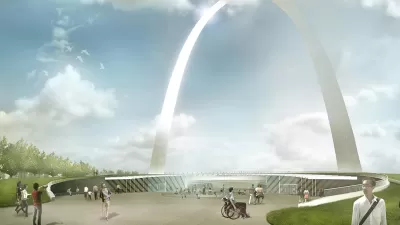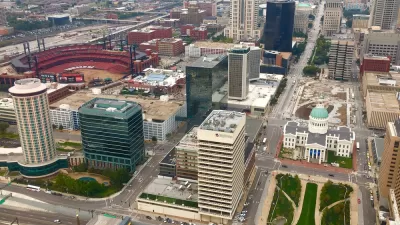It's not the grand slam that the Cardinals and their developer partner were hoping for, but news that the first piece of the $650 million Ballpark Village development project has started construction was welcomed in St. Louis.
With cautious city officials and investors sitting on the sidelines, the St. Louis Cardinals and their developer partner started construction on the $100 million first phase of their ambitious Ballpark Village project, a $650 million mixed-use entertainment-oriented development located adjacent to their downtown stadium, reports Maura Webber Sadovi.
"The developers are hoping to generate interest in the broader project by starting with a smaller piece and adding streets and other infrastructure to make the 10-acre site ready for development. But analysts said financing and the project's completion remain a challenge, as cities and investors more carefully scrutinize entertainment-oriented developments."
"Sports- and entertainment-based facilities have had a really mixed history of success, so investors are becoming pickier about what they do," said Joseph Krist, a municipal-credit analyst with a unit of Swiss bank UBS AG. "Before the financial crisis, there was a greater appetite."
"St. Louis needs the spark that the project may bring," notes Sadovi. "The city's population has dropped more than 50% since 1950 to an estimated 318,000 in 2011, according to the U.S. Census Bureau."
"It's a great start," said Mark Rosentraub, a professor of sports management at the University of Michigan, "They're not just building a stadium and hoping and wishing."
FULL STORY: Cardinals Build a Village

Study: Maui’s Plan to Convert Vacation Rentals to Long-Term Housing Could Cause Nearly $1 Billion Economic Loss
The plan would reduce visitor accommodation by 25,% resulting in 1,900 jobs lost.

North Texas Transit Leaders Tout Benefits of TOD for Growing Region
At a summit focused on transit-oriented development, policymakers discussed how North Texas’ expanded light rail system can serve as a tool for economic growth.

Why Should We Subsidize Public Transportation?
Many public transit agencies face financial stress due to rising costs, declining fare revenue, and declining subsidies. Transit advocates must provide a strong business case for increasing public transit funding.

How Community Science Connects People, Parks, and Biodiversity
Community science engages people of all backgrounds in documenting local biodiversity, strengthening connections to nature, and contributing to global efforts like the City Nature Challenge to build a more inclusive and resilient future.

Alabama: Trump Terminates Settlements for Black Communities Harmed By Raw Sewage
Trump deemed the landmark civil rights agreement “illegal DEI and environmental justice policy.”

Dear Tesla Driver: “It’s not You, It’s Him.”
Amidst a booming bumper sticker industry, one writer offers solace to those asking, “Does this car make me look fascist?”
Urban Design for Planners 1: Software Tools
This six-course series explores essential urban design concepts using open source software and equips planners with the tools they need to participate fully in the urban design process.
Planning for Universal Design
Learn the tools for implementing Universal Design in planning regulations.
City of Santa Clarita
Ascent Environmental
Institute for Housing and Urban Development Studies (IHS)
City of Grandview
Harvard GSD Executive Education
Toledo-Lucas County Plan Commissions
Salt Lake City
NYU Wagner Graduate School of Public Service




























